"Design is nothing but a humble understanding of materials, a natural instinct for solutions and respect for nature." – B.V. Doshi
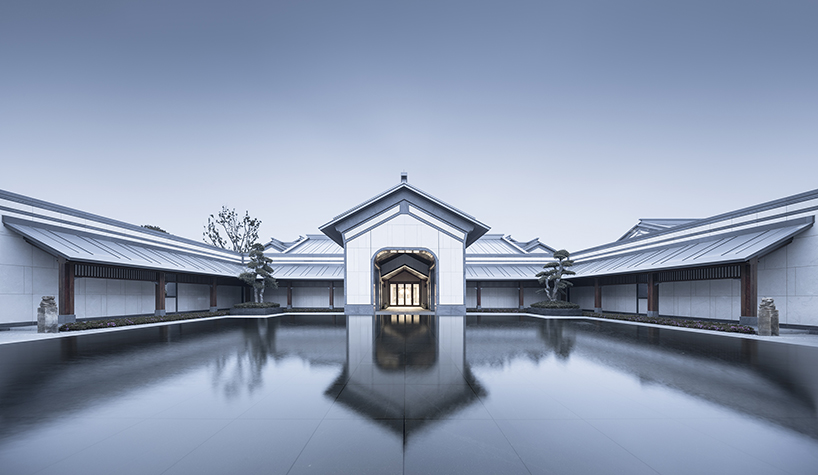
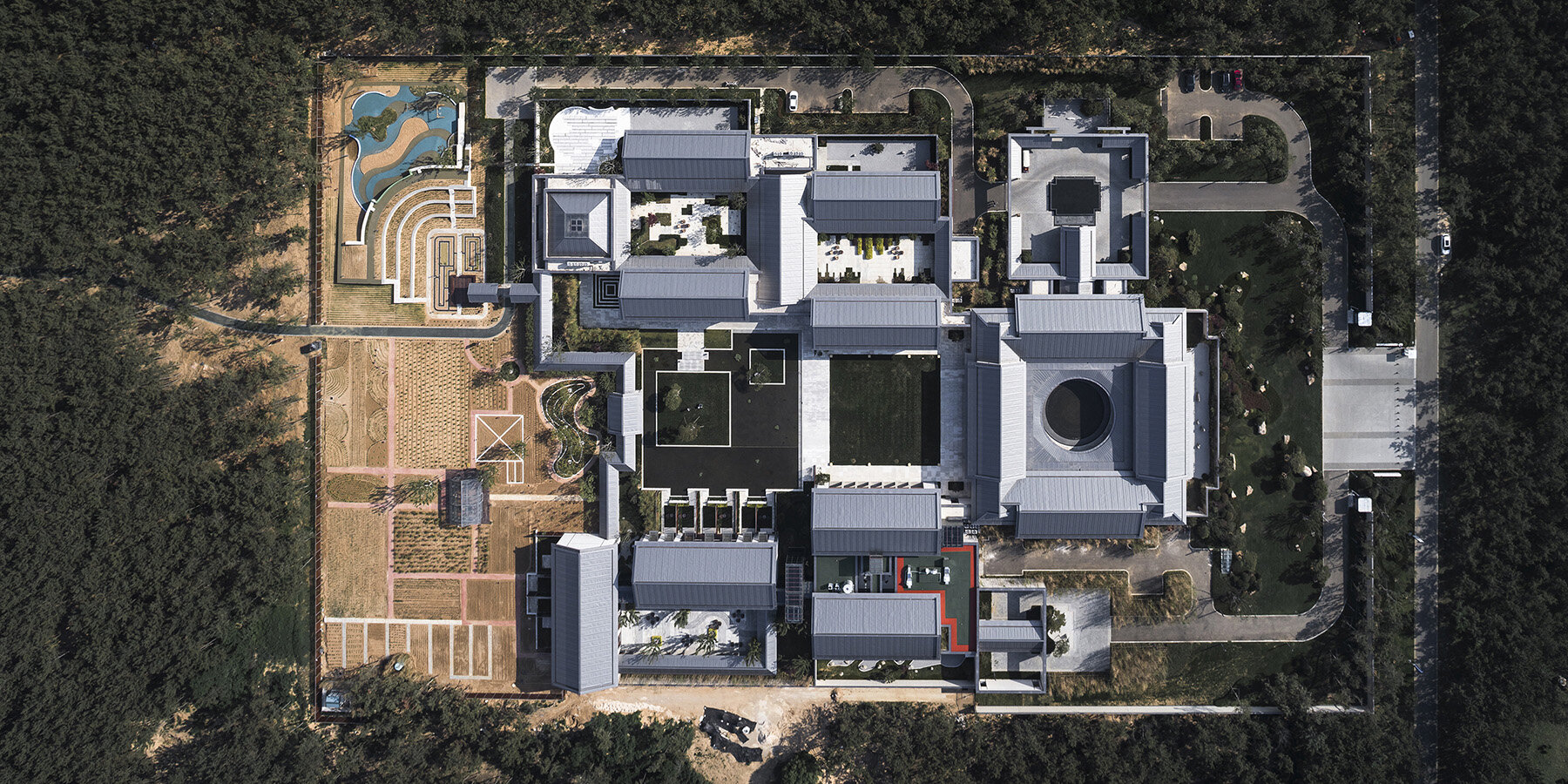 |
 |
 |
숲 속에서 피어난 현대 중국 건축: Weihai 병원의 중정 설계 GLA design merges weihai hospital's open layered courtyards with chinese pine forest
중국 산둥성 위해에 위치한 Weihai Hospital of Traditional Chinese Medicine은 GLA Design에 의해 설계된 건축물로, 전통적인 북중국 건축의 중정 구조를 현대적인 재료와 설계로 재해석한 병원입니다. 이 병원은 자연과 건축의 조화, 전통과 현대의 균형을 강조하며, 방문객들에게 독특한 공간 경험을 제공합니다.
1. 프로젝트 개요
프로젝트명: Weihai Hospital of Traditional Chinese Medicine
건축사: GLA Design
위치: 중국 산둥성 위해
면적: 8,000㎡
사진: YAO Li
이 병원은 과거 방갈로들이 있던 부지에 새롭게 건립되었으며, 자연 환경을 보존하면서 현대적인 병원 건축을 실현한 점이 특징입니다. 이 병원은 전시센터, 요양원, 그리고 의료 시설을 포함하고 있으며, 각각의 공간이 상호 연결된 복도와 중정을 통해 자연스럽게 융합되어 있습니다. 이는 공간 내에서 자연스러운 이동과 시각적 흐름을 가능하게 합니다.
2. 설계 개념: 전통과 현대의 융합
Weihai Hospital의 설계는 중국 전통 건축에서 영감을 얻어 중정 구조를 현대적으로 해석한 것입니다. 중정은 전통 중국 건축에서 중요한 요소로, 병원 내 여러 공간이 중정을 중심으로 배치되어 자연과의 상호작용을 극대화합니다. 특히 현대적인 재료를 사용하여 전통적인 형태를 유지하면서도, 알루미늄-마그네슘-망간 합금 등의 재료를 통해 구조적 안정성과 시각적 간결함을 동시에 실현하였습니다.
이러한 설계 방식은 병원의 기능성과 미학적 완성도를 모두 충족시키며, 각 공간이 독립적으로 존재하면서도 서로 유기적으로 연결됩니다. 이를 통해 방문자는 병원 내에서의 이동 시 자연스러운 공간 변화를 경험할 수 있습니다.
중정 구조: 병원은 네 벽으로 둘러싸인 중정, 양측 건물이 마주보는 중정 등 다양한 중정 유형을 도입했습니다. 이는 병원의 각 공간이 독립적인 느낌을 주면서도, 복도를 통해 자연스럽게 연결되어 전체 공간이 하나의 큰 흐름을 형성하게 합니다.
재료와 미학: 현대적 재료를 사용하여 전통적인 북중국 건축 양식을 유지하면서도, 현대적 편리성을 제공하는 디자인을 완성했습니다. 이 병원은 전통과 현대가 조화를 이루는 공간으로, 기능적이고 내구성이 강한 재료가 병원의 미학적 완성도를 높입니다.
3. 자연과 건축의 조화
Weihai 병원의 가장 큰 특징 중 하나는 자연과의 조화입니다. 병원은 Pinus thunbergii 소나무 숲을 배경으로 자연과 건축물이 하나로 어우러지도록 배치되었습니다. 이 병원에서는 자연과의 상호작용이 공간 설계의 중요한 요소로 작용하며, 중정과 물경관을 통해 자연이 건물 내부로 스며드는 듯한 효과를 주고 있습니다.
대형 물경관: 병원 중심부에 위치한 물경관은 주변 경관을 반사하는 역할을 하며, 건물과 자연의 경계를 허물어 심리적 안정감을 제공합니다. 이 공간은 단순한 시각적 즐거움을 넘어 방문자들에게 심리적 평온함을 제공합니다.
차량과 보행자 구역의 분리: 병원 방문객의 안전을 고려해 차량과 보행자 구역을 명확히 분리했습니다. 이를 통해 병원 내부의 동선 관리가 효율적으로 이루어지며, 방문객들이 보다 편안하게 병원을 이용할 수 있습니다.
4. 현대적 편리성과 전통적 미학의 균형
Weihai Hospital은 전통적인 북중국 건축의 본질을 유지하면서도, 현대적 요구에 맞는 편리성과 미학적 균형을 동시에 달성했습니다. 특히 중국 철학의 '방정한 땅과 둥근 하늘' 개념을 반영한 원형 중정은 병원의 중심에서 중요한 역할을 하며, 이 공간에서 복도와 물경관이 자연스럽게 연결됩니다.
원형 중정: 이 중정은 병원의 주요 요소 중 하나로, 방문자들에게 계절에 따라 변화하는 경관을 제공하며, 병원 내외부 공간의 흐름을 자연스럽게 이어줍니다. 이를 통해 병원 내에서 방문자들은 지속적인 공간 변화를 경험하게 됩니다.
거울 같은 물경관: 자연 경관을 반사하는 물경관은 건물과 자연의 경계를 허물어 방문객들에게 심리적 안정감을 제공합니다. 이 요소는 병원의 미학적 완성도를 높이며, 자연과 건축이 하나로 어우러진 공간을 형성합니다.
5. 건축 트렌드와의 비교 분석
Weihai Hospital은 글로벌 건축 트렌드인 전통과 현대의 융합을 실현한 대표적인 사례로, 전통적인 중정 구조와 현대적 재료를 결합하여 지속 가능한 건축물로 재탄생했습니다. 방문객들에게 전통적인 경험과 현대적 편리성을 모두 제공하며, 지속 가능한 건축 디자인의 중요한 요소로 자리 잡고 있습니다.
6. 결론: 지속 가능한 전통의 재해석
Weihai Hospital of Traditional Chinese Medicine은 전통적인 북중국 건축 양식을 현대적인 해석으로 새롭게 구현한 사례입니다. 건축물 내외부에 걸쳐 자연과의 조화를 이루고 있으며, 전통과 현대적 재료의 균형을 통해 방문객들에게 평온함과 심미적 만족감을 제공합니다. 이러한 전통과 현대의 결합은 앞으로도 지속 가능한 건축 디자인의 중요한 요소로 자리 잡을 것입니다.
Write by ChatGPT & 5osa


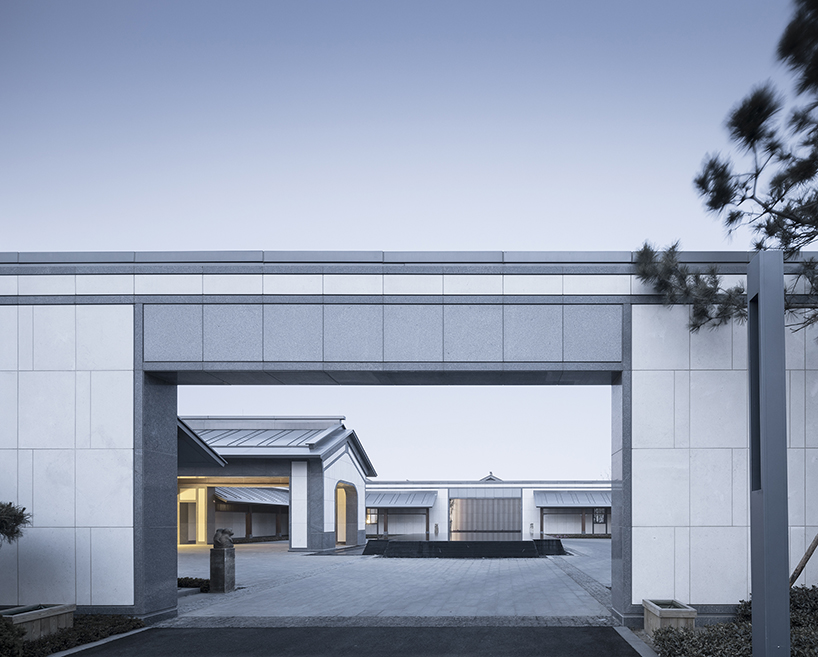
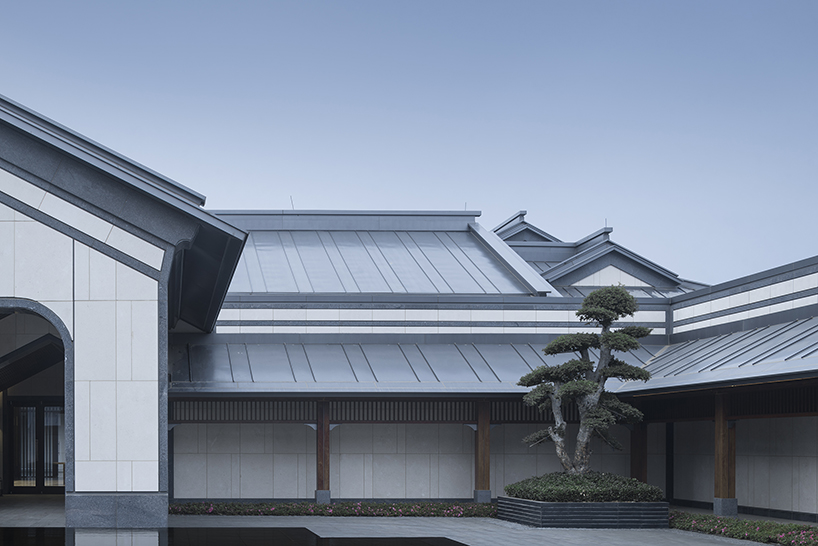
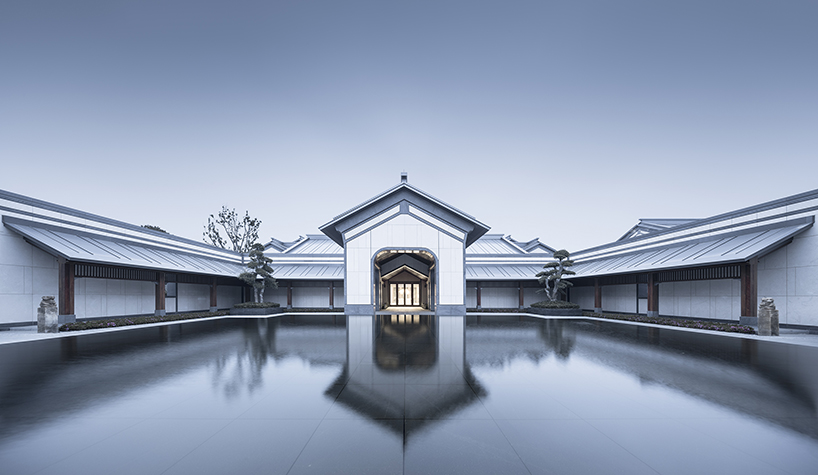

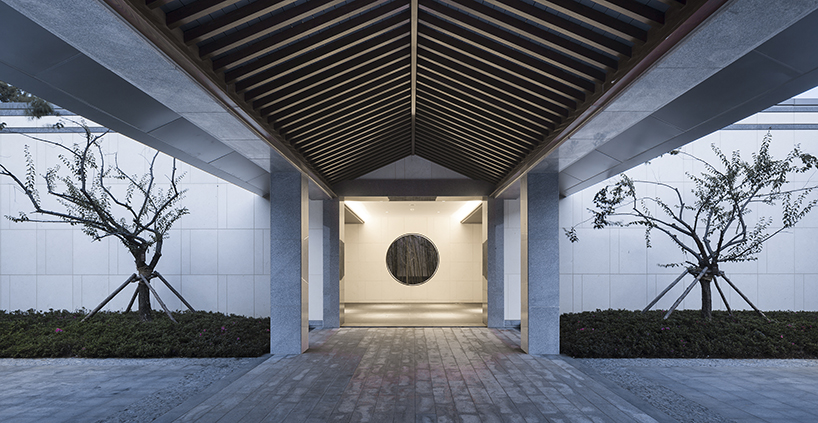
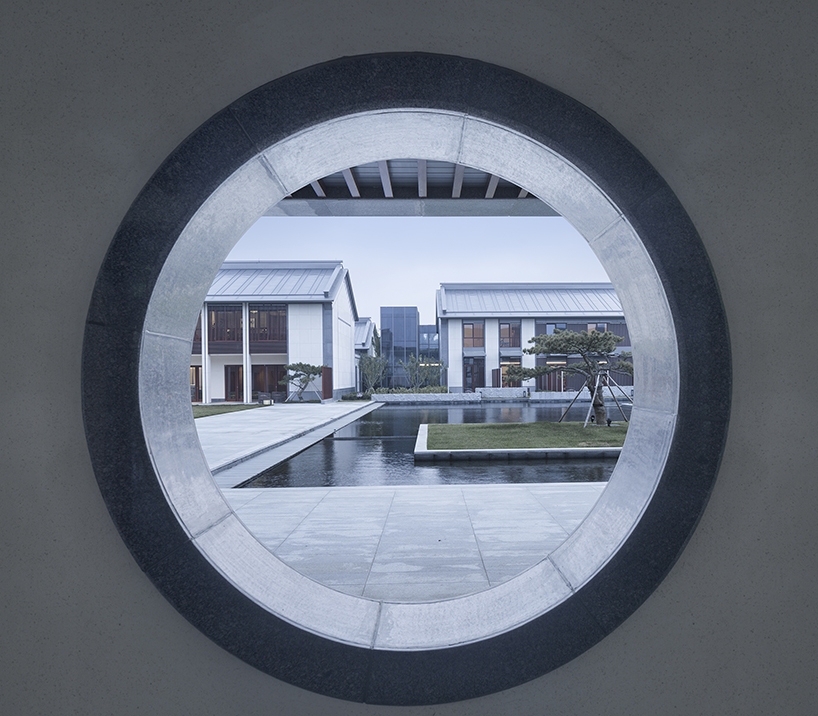



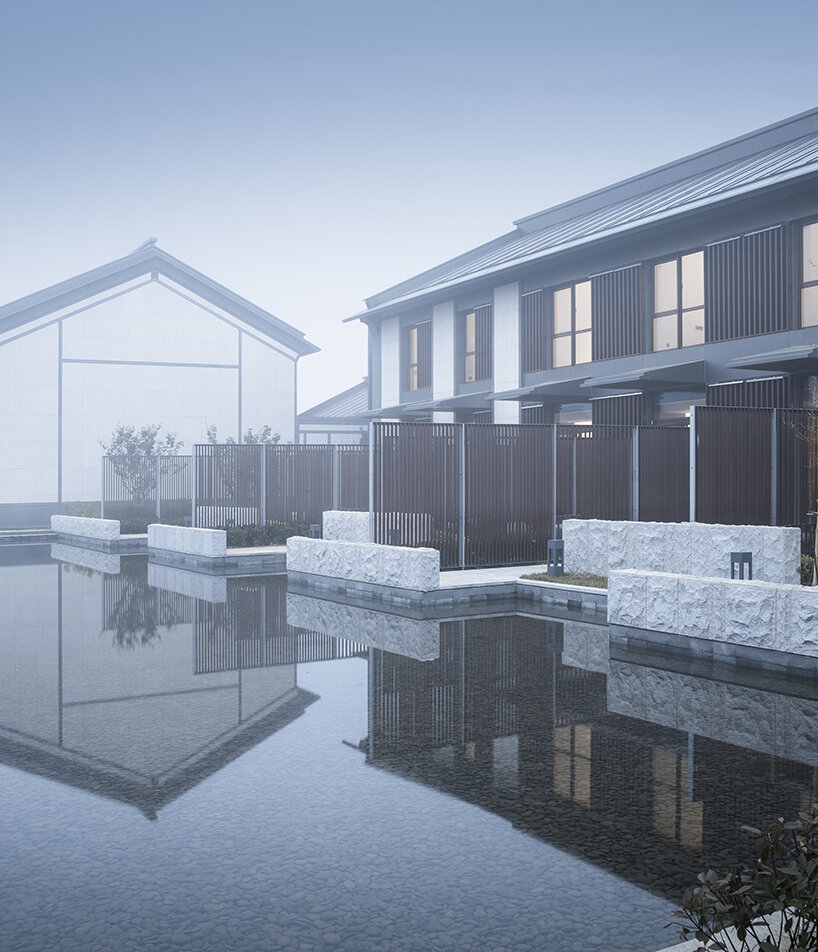

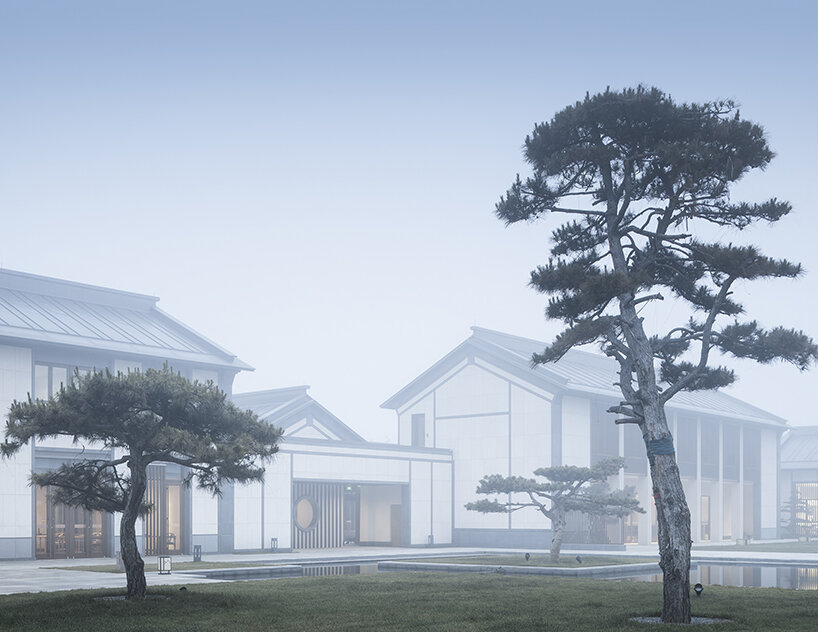

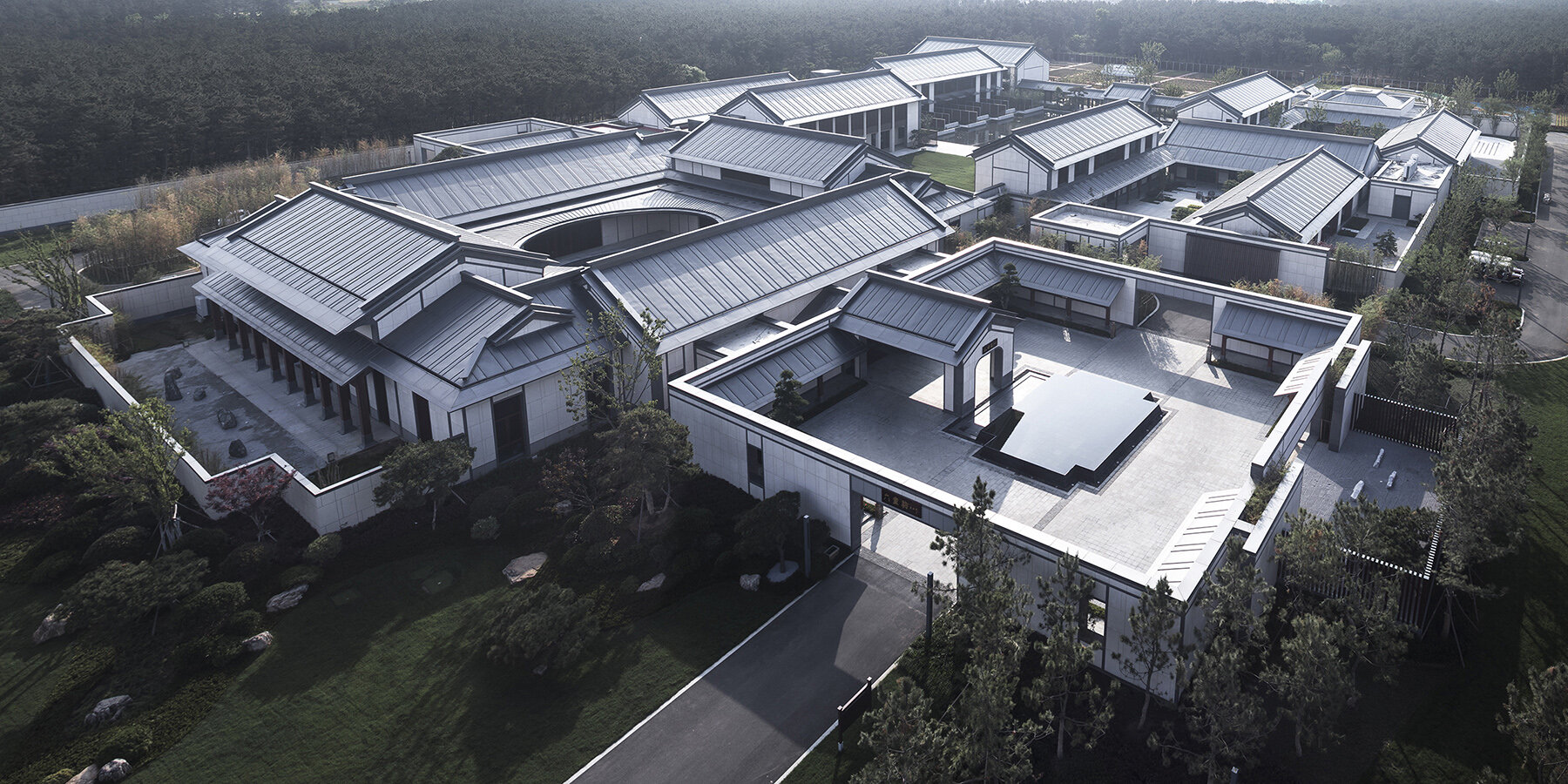
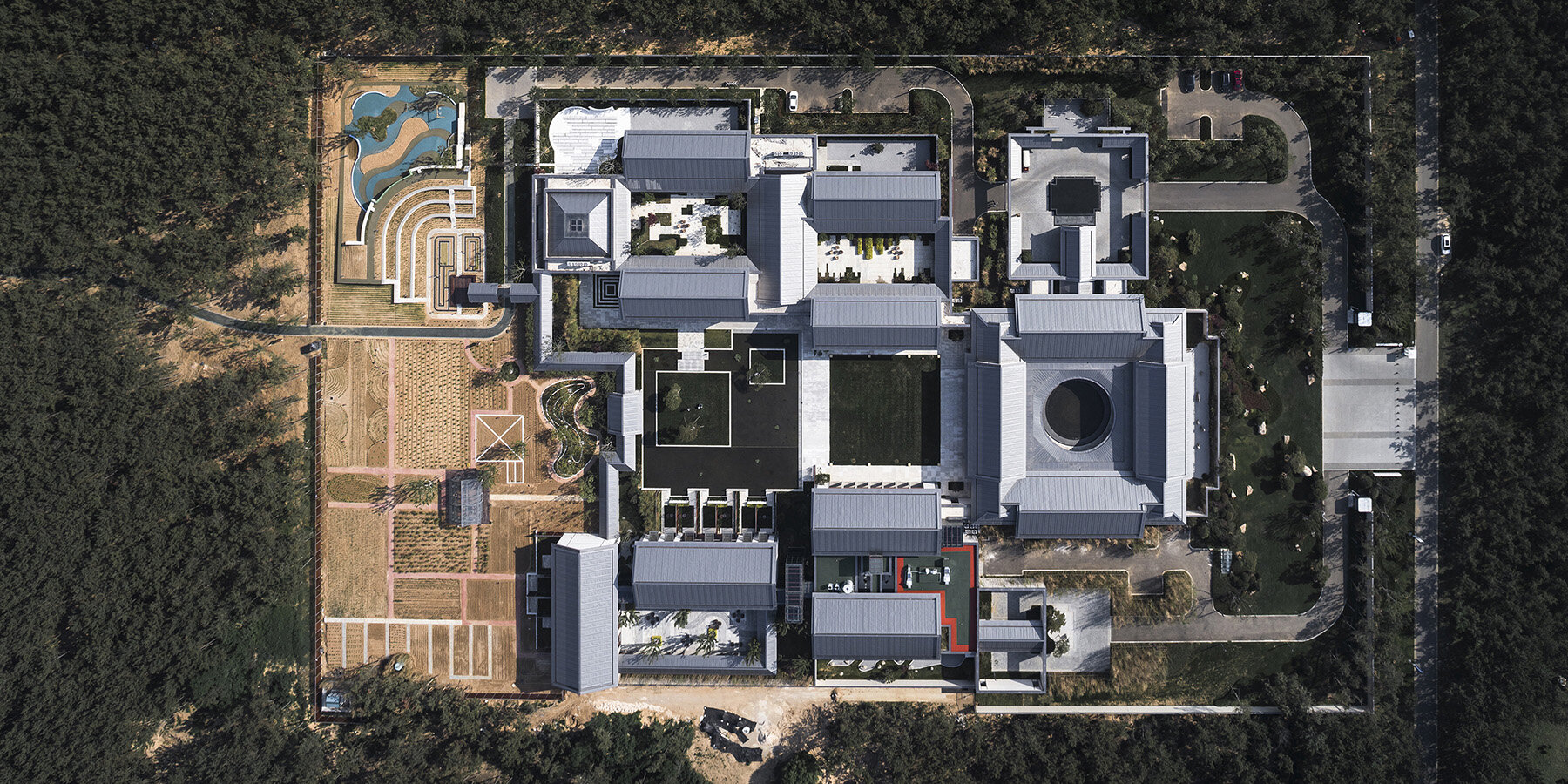
name: Weihai Hospital of Traditional Chinese Medicine
architect: GLA Design
location: Shandong, Weihai, China
photography: YAO Li
Weihai Hospital of Traditional Chinese Medicine by GLA Design
Conceived by GLA Design, Weihai Hospital of Traditional Chinese Medicine integrates modern architecture with traditional elements. Situated within a coastal pine forest in Weihai‘s East New Town, the 8,000 sqm healthcare facility occupies a site formerly housing bungalows, preserving the natural surroundings while introducing a contemporary interpretation of northern Chinese courtyards.
The hospital encompasses an exhibition center, sanatorium, and medical care houses. The design juxtaposes modern materials with the essence of ancient courtyard structures, creating an immersive and layered spatial experience. Interconnected corridors and varied courtyard types enhance the flow and functionality of the space, maintaining harmony with the natural environment.
Weihai Hospital’s architecture Balances Tradition and Modernity
The designers aim to retain the essence of Chinese courtyard structures, focusing on their scale and form. Modern materials and construction techniques balance the site’s experiential value with contemporary features. Courtyards are classified into types—four walls, two walls with facing buildings, and four buildings on each side—connected by corridors aligned along north-south and east-west axes, recreating the layered experience of traditional courtyards.
The courtyards enclose a half-open central garden facing the pinus thunbergii forest. Two yardsticks of varying width divide the central garden into a half-open court and a water court, creating a rich spatial experience with buildings and walls forming nested courtyards and gardens.
The construction incorporates the basic form of traditional northern architecture with contemporary materials such as aluminum-magnesium-manganese, steel, wood, and weather-resistant stones. Simplified architectural details restore traditional styles while maintaining a modern aesthetic. The car entrance, capped with stone and aluminum, separates vehicle and pedestrian areas, enhanced with plaques, pines, and metal blinds.
Courtyard-Centric Design Harmonizes Nature and Architecture
The scenery-borrowing method integrates the surrounding forest into the courtyards, blending purity and elegance with the external scene. The main entrance courtyard, surrounded by four walls, changes the road direction from west to south, featuring a mirror waterscape that enhances the entrance scene.
The second courtyard, surrounded by round corridors with eaves, reflects the Chinese philosophy of ‘a square earth and spherical heavens.’ Its waterscape, collecting rainwater, varies with the seasons. The third courtyard, forming a three-sided enclosure, opens to the eastern forest and backyard, creating a sequence of spaces from enclosed to open, including a lawn-centered court, a waterscape court, and an ornamental waterscape court.